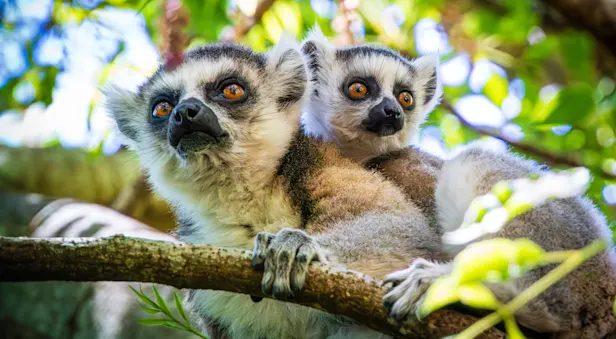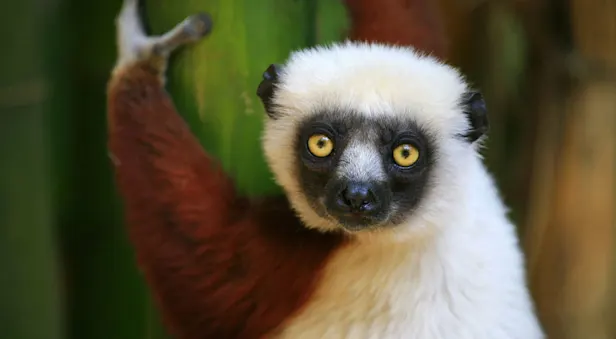Know Before You Go
Indri Family Facts | Madagascar Wildlife Guide
The indri family includes indri, sifakas and woolly lemurs. This group has somewhat human proportions, with long, powerful legs and shorter arms. They are primarily tree dwellers, and their graceful leaps from tree to tree prove this inclination.
INDRI
The indri is the largest and most vocal lemur. Indris are easily seen at Andasibe-Mantadia National Park (Perinet Reserve), where their haunting song provides one of Madagascar’s unforgettable experiences.
Indri live in small family groups in the northeastern rain forests. Their territories are too big to defend by scent alone, so their song proclaims their whereabouts and warns others to stay away.
WOOLLY LEMUR
The two species of woolly lemur are the only nocturnal members of the indri family, although they are often seen during the day sleeping in trees or shrubs. They may be mistaken for sportive lemurs until you see the distinctive white patches on the back of the thighs. Woolly lemurs are lethargic animals that live on a low-energy diet primarily of leaves. Even at night they spend much of their time resting, although in short bursts they can leap speedily through the forest.
GOLDEN COLORED DIADEMED SIFAKA
The diademed sifaka is considered by many to be the most beautiful of all the lemurs: its silky coat is a combination of orange, gold, white, silver and black, and it has piercing ruby red eyes. It is also the largest sifaka. Unfortunately, it is an elusive animal, which might be seen in Mantadia National Park.
VERREAUX’S SIFAKA
Verreaux’s sifaka is one of the main attractions of Berenty, where it feeds on leaves, buds, fruit and flowers. It appears never to drink and is one of the few mammals at home in the arid Didiereaceae forest, where it can leap onto the spiny boughs without damaging its hands or feet.
Photo Credit: Richard de Gouveia


























